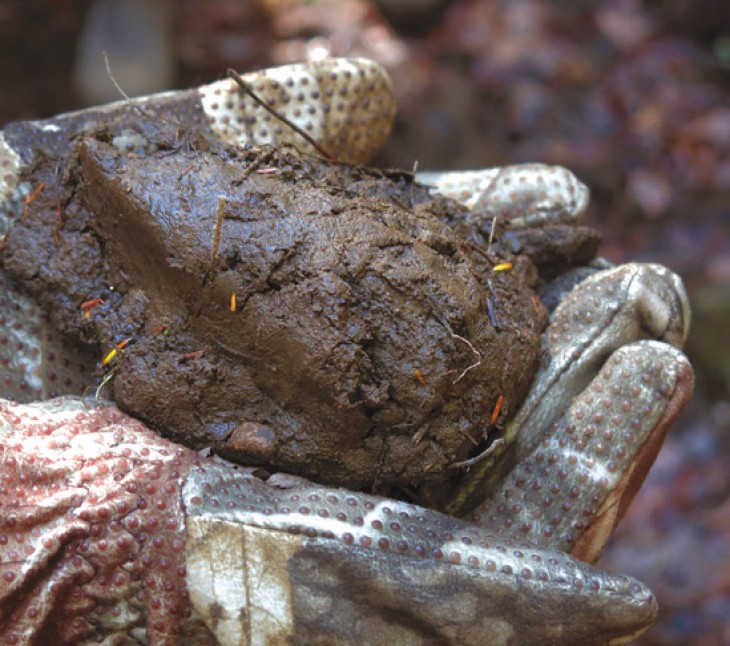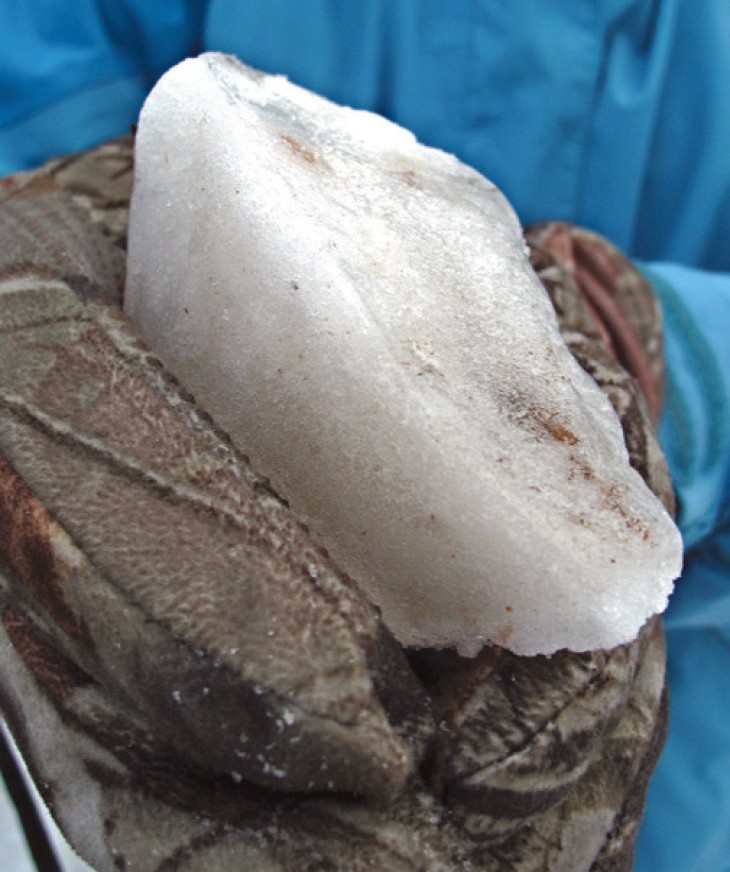Tracking appeals to us because we enjoy sorting out nature’s subtle clues – clues that lead us to visualize and appreciate the behavior of different wildlife species. Simple tracks of moose and deer are obvious discoveries for the most part. Other evidence, a bed site, a rub, or a hair snagged on a twig tip – these are signs that enable elusive species to come alive in our imaginations. What I have named “hoof clods,” “wedgies,” and “hoof imprints” are examples. Though related to tracks, they are more than that. They are delightful physical pieces of the puzzle. You can hold them in your hands and wonderfully feel the presence of the moose or deer that left them.
First, let’s review some cervid foot nomenclature. What we call a hoof is actually an extension of the foot’s toes. The hardened clouts are the paired toenails of toes three and four. Smaller vestigial nails for digits two and five are called dewclaws, and over evolutionary time have become separated from the main toe clouts of the hoof. Toe number one (the equivalent of our thumb) is absent from cervid feet.
The clout wall is analogous to our fingernails, and its hardness contributes to the hoof ’s durability, traction, and sharpness for digging. Also called the unguinus, the wall is made up of compressed hairs that are glued together by body proteins. The subunguinus is a narrow area of soft tissue located between the wall and the inner callus pad. The callus pad is the relatively hard but supple base that forms most of a hoof clout’s bottom surface.
Back to clods, wedgies, and imprints. You can find these signs in any season. All you need is packable mud or freezing temperatures and snow. A hoof clod is a lump of earth or snow that has been packed in between a deer or moose’s hoof clouts and subsequently dropped as differences in terrain hardness caused the clouts to flex and spread apart. Clods are wedge-shaped and one can readily feel the smooth sides shaped by the inner walls of the paired clouts. I call especially good ones wedgies. Of interest to transportation planners and wildlife biologists, one can determine exactly where moose cross a roadway by searching for clods and wedgies that have been expelled from hooves onto the hard pavement.
Imprints are moldings of the bottom of hoof clouts. Snow and ice become packed within the wall edges and into the callus pad’s slightly concave surface. The packed snow builds up, much as we sometimes experience a similar accumulation of snow within the crampons of our snowshoes. Look for a cast replica of a clout’s base with recognizable wall, subunguinus space, and callus pad impressions visible. I often find perfect hoof imprints within or near a recently vacated bed site. The warmth of the animal’s curled body covering its feet causes the frozen imprints to thaw slightly, then to be released when the deer or moose stands up and exits the bed.






